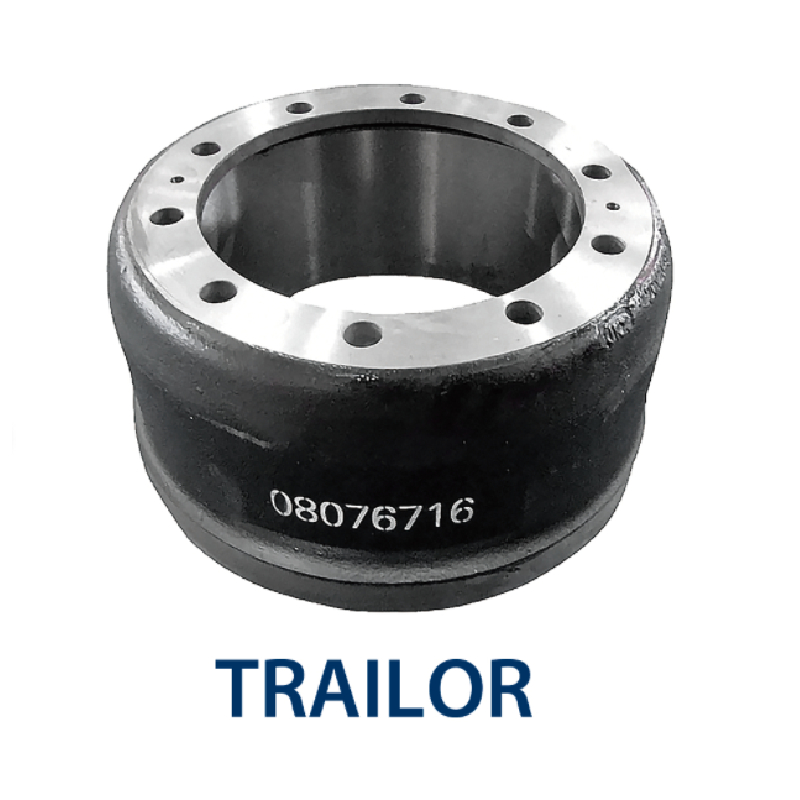ਨਵੰ. . 11, 2024 08:36 Back to list
hydraulic brake drum
Understanding Hydraulic Brake Drums Functionality and Components
Hydraulic brake drums are an essential component in many vehicles, providing efficient braking through hydraulic force. Unlike disc brakes, which utilize a rotor and caliper setup, brake drums provide a different approach to slowing down or stopping a vehicle. In this article, we will explore the structure, operation, advantages, and common applications of hydraulic brake drums.
How Hydraulic Brake Drums Work
At the heart of any hydraulic braking system is the principle of hydraulics, which states that a fluid in a closed system transmits pressure effectively. Hydraulic brake drums operate using brake fluid that is pressurized by the brake pedal's force. When the driver presses the pedal, it activates a master cylinder that pushes brake fluid through a system of lines to the wheel cylinders located within the brake drum assembly.
The essential components of a hydraulic brake drum include the drum itself, wheel cylinder, brake shoes, and various springs and retainers. The brake drum, typically made of cast iron or aluminum, surrounds the wheel hub and rotates with the wheel. The wheel cylinder, located inside the drum, is equipped with pistons that force the brake shoes outward against the inner surface of the drum when hydraulic pressure is applied. This action creates friction between the shoes and the drum, ultimately slowing down or stopping the vehicle.
Advantages of Hydraulic Brake Drums
One of the primary advantages of hydraulic brake drums is their ability to provide strong and consistent stopping power. The hydraulic system allows for greater force transmission, enabling a more responsive braking experience. Additionally, brake drums generally have a larger surface area compared to brake discs, which can contribute to effective heat dissipation, minimizing the risk of brake fade.
Another significant benefit of hydraulic brake drums is their durability and lower cost of manufacture
. They are less prone to warping under high temperatures, a common issue with disc brakes, making them more suitable for various driving conditions, particularly in heavy-duty applications like trucks and buses.Moreover, hydraulic brake drums require less maintenance than their disc counterparts. The enclosed design reduces exposure to contaminants, such as dirt and water, which can affect performance. Furthermore, the wear on brake shoes tends to be more gradual, resulting in less frequent replacements.
hydraulic brake drum

Common Applications of Hydraulic Brake Drums
Hydraulic brake drums are predominantly used in various vehicles, including cars, trucks, and buses. They are especially favored in commercial vehicles due to their ability to handle higher loads and continuous braking without overheating. Many heavy trucks and trailers utilize brake drums on their rear wheels, where the additional brake force is most beneficial.
Additionally, hydraulic brake drums are found in older vehicle models, where the technology has proved reliable and easier to service. Although many manufacturers have shifted towards disc brakes for their performance benefits, brake drums remain a viable option in specific applications where weight and cost efficiency are paramount.
Maintenance and Safety Considerations
To ensure optimal performance and longevity of hydraulic brake drums, regular maintenance is crucial. This includes checking brake fluid levels, inspecting for leaks, and examining the condition of the brake shoes and drums for wear. Drivers should be attentive to signs of braking issues, such as unusual noises or reduced effectiveness, which might indicate a need for servicing or component replacement.
Ignoring maintenance can lead to safety hazards, as compromised braking systems can result in longer stopping distances or brake failure. Therefore, routine inspections by qualified technicians are recommended to ensure the hydraulic braking system operates smoothly and safely.
Conclusion
Hydraulic brake drums remain a vital part of many vehicles, especially in heavy-duty applications where reliability, cost-effectiveness, and durability are key. Understanding their operation and advantages helps vehicle owners and operators appreciate this essential component and its role in modern automotive engineering. By prioritizing maintenance and safety, drivers can ensure the longevity and effectiveness of their hydraulic brake drum systems, ultimately contributing to safer roadways for all.
-
Iveco Brake Drum | Premium OE Quality for Daily & Eurocargo
NewsAug.22,2025
-
Your Brake Drum Man: Quality & Performance Parts
NewsAug.21,2025
-
Explore Japan: Ultimate Travel Guide & Authentic Experiences
NewsAug.19,2025
-
Your Brake Drum Man: Premium & Reliable Brake Drums for Sale
NewsAug.18,2025
-
ROR Web Development: Build Fast, Scalable, Secure Apps
NewsAug.17,2025
-
Scania Brake Drums: OEM Quality for Optimal Safety & Durability
NewsAug.16,2025
